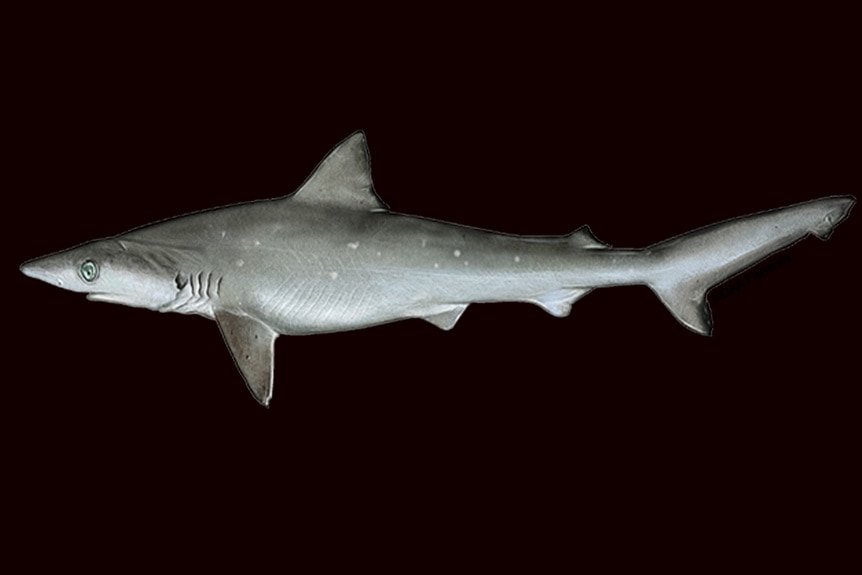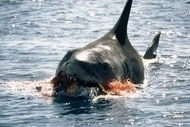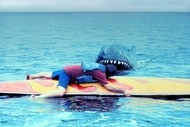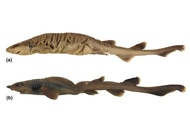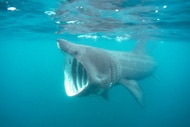Create a free profile to get unlimited access to exclusive videos, sweepstakes, and more!
Cocaine Sharks! Scientists Find Sharks Contaminated with Cocaine off the Coast of Brazil
Who could have predicted freebasing fishes?
In recent years, the production and consumption of cocaine has reached record levels globally. While the effects and consequences of cocaine use in humans are pretty well understood, the downstream impact to the wider environment is a little murkier. Recently, researchers collected 13 Brazilian sharpnose sharks off the coast of Rio de Janeiro, Brazil, each of which tested positive for high levels of cocaine in their muscles and livers.
This isn’t the first time scientists have found aquatic creatures with an apparent penchant for partying, but it is the first time they’ve confirmed the presence of cocaine in sharks. Moreover, these sharks had levels of cocaine approximately 100 times higher than their previously tested neighbors.
The discovery conjures images of the perfect movie monster mashup, marrying the submarine screams of Jaws with the drug-fueled terrestrial terror of Cocaine Bear. In the latter film, loosely based on real events, a bear ingests fatal amounts of cocaine after bundles of the substance are dumped in the woods. Researchers suspect similar dumping could contribute to coke-addled fishes, but it’s probably only a small part.
Levels of cocaine detected in sharpnose sharks were consistent with chronic exposure, not a single unfortunate encounter. Instead, sharpnose sharks likely get most of their drugs through wastewater runoff, coming from both illegal cocaine refining facilities and the body waste of users.
For More on Animals Doing Drugs:
Wild Party! The Science Behind ‘Cocaine Bear’ and Other Inebriated Animals
LSD Dolphins: The Tragic Real-Life Story that Makes Cocaine Bear Look Tame
Can Real Animals Make Drugs that Get You High, Like Dune’s Sandworms?
Illegal and Prescription Drugs are Getting into Aquatic Wildlife
Earlier research in the English Channel revealed similar results. Scientists found traces of cocaine, amphetamines, and MDMA (commonly known as Ecstacy or Molly). Researchers noted that levels were low enough that wild animals aren’t at risk of overdose, but it could modify their behavior, making them more erratic and even causing them to miss migratory or mating cues critical for their survival.
Researchers from Florida International University found opioids and prescription drugs in almost every fish they studied. More than 94% of fish tested positive for multiple drugs including antidepressants, heart medications, and more. In a separate study, researchers conducted blood tests on 93 bonefish from around South Florida and found pharmaceuticals including valium and blood pressure medications in all of them. Each fish had on average, seven different drugs in its system.
Another study focused on sea urchins collected off the coast of Brazil. Scientists raised them in a lab, exposing them both to crack cocaine and increased water acidity. They found that higher acidity (a real-world consequence of climate change) exacerbated the effects of cocaine, causing potentially fatal birth defects. Everything we consume eventually makes its way to the oceans, and this study highlights the need to address not just individual compounds or phenomena, but how they interact in the environment.
Cocaine Contaminated Sharks in Brazil
Scientists selected the sharpnose shark for the most recent study, published in Science of the Total Environment, because of its small body size and because they live in a small area along the coast of Brazil, where they are likely to be exposed to cocaine and other contaminants. According to the study, nearly a quarter of all global cocaine users live in South America, and Brazil represents the second-largest market on the continent. It was a good bet that if sharks were getting cocaine anywhere, they were getting it there.
Each of the 13 sharks tested positive either for cocaine or benzoylecgonine, the primary metabolite of cocaine. When cocaine is consumed, either by a human or some other creature, most of it gets metabolized and used up by the body, but some of it gets through. That crafty cocaine makes its way through the toilet and into the water system where some, but not all, of it breaks down. A little bit of cocaine along with cocaine metabolites get into the oceans where sharks and other critters unwittingly consume it.
In the future, researchers plan to study migratory fish which only spend part of their lives near the coast, to see how that impacts their exposure to pharmaceutical and other contaminants. Researchers also note that current wastewater treatments should be updated to better protect the environment from an accidental contact high.
Catch Jaws and Cocaine Bear, streaming now on Peacock!





